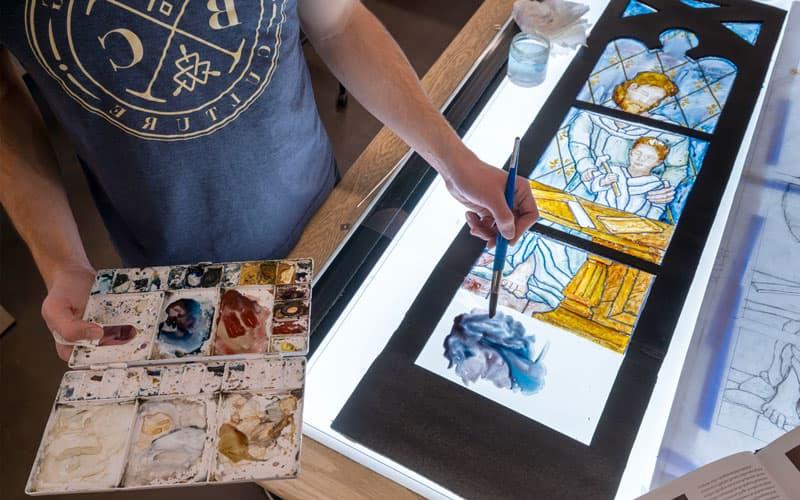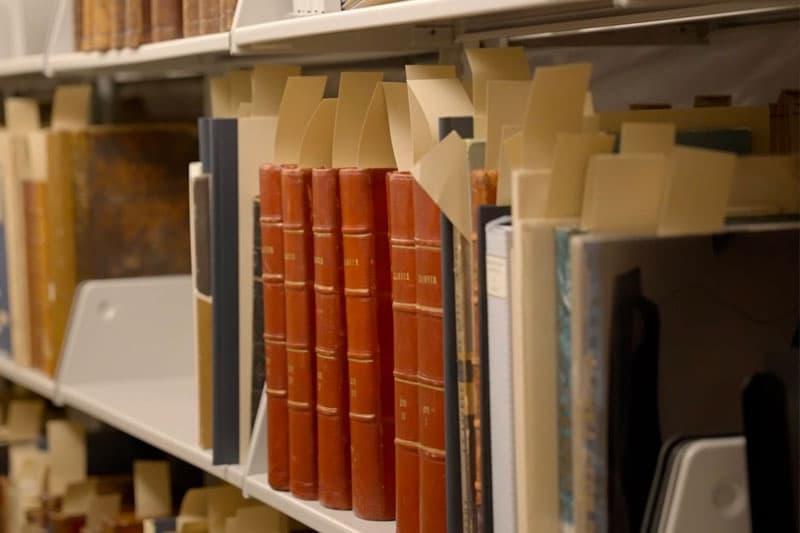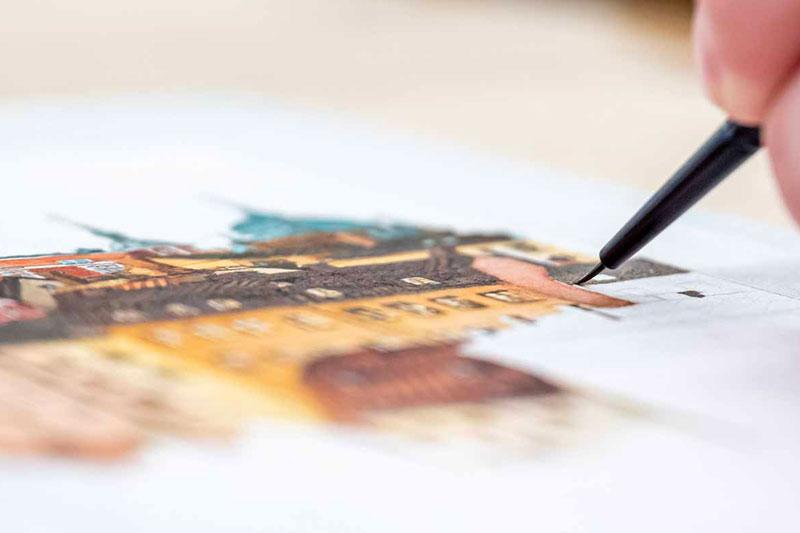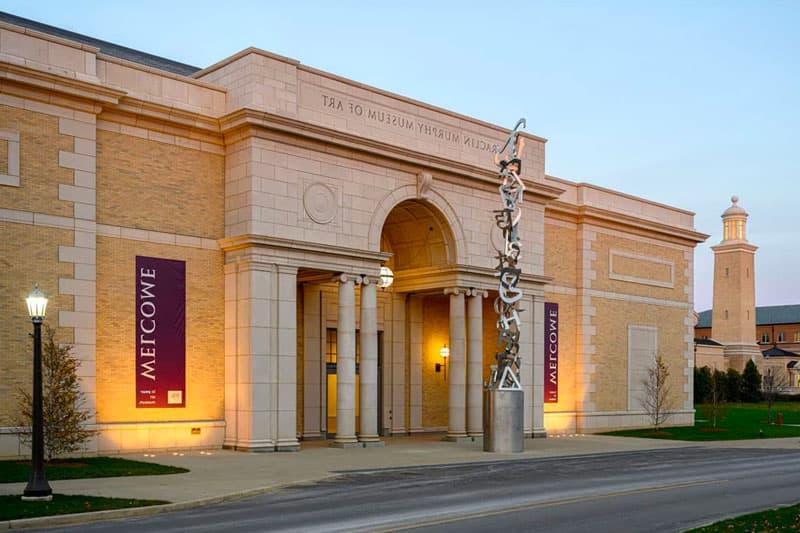For Stephen Hartley, the path to becoming a better architect involves getting your hands dirty.
Hartley, an associate professor of the practice in 电竞赌博平台’s School of Architecture, wants his students to have a deeper appreciation for the work craftspeople do to fulfill an architect’s vision—by learning the vocabulary of the trades, 了解他们的历史, and, 在可能的情况下, 试用工具.
这就是他去年秋天开设新课程的目的, 叫做用光绘画, that explored the significance and long history of stained glass as an art form and architectural element.
在课程中, students had the chance to try their hand at various techniques including cutting and painting glass, 以及创造和展示他们自己的窗户设计. 这个班还和St. 阿达伯特天主教堂 on South Bend’s westside to assess and document the condition of its stained-glass windows.
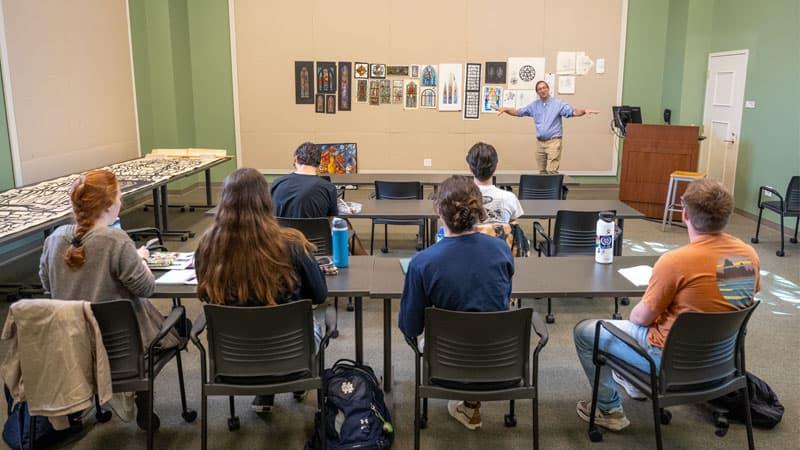
“我不是想培养玻璃艺术家, but I am trying to help people have a greater appreciation of what it means to do this,哈特利说. “在高等教育和社会中,这种情况经常发生, 我们把自己孤立起来, 甚至从我们从事的领域, and projects break down when we don’t understand one another’s perspectives.
“We need to return to the concept of the designer and builder working in tandem. If we all had a better understanding of everyone else’s roles in making beautiful buildings, 更多美丽的建筑将被建造.”
查尔斯·Z. 劳伦斯集合
2019年,哈特利萌生了“用光作画”的想法, when he found himself in the house of renowned stained-glass artist 查尔斯·Z. 劳伦斯,他刚刚去世. Hartley, 他20年前曾与劳伦斯短暂共事过, had been contacted by Lawrence’s daughter who wanted to donate some of her father’s books.
在与她会面时, Hartley learned that the artist had also kept hundreds of sketches from projects he’d worked on—including windows Lawrence did for the Washington National Cathedral in Washington, DC. Lawrence’s daughter said that she and her siblings did not have room for all the drawings they’d found, 她把它们给了他.

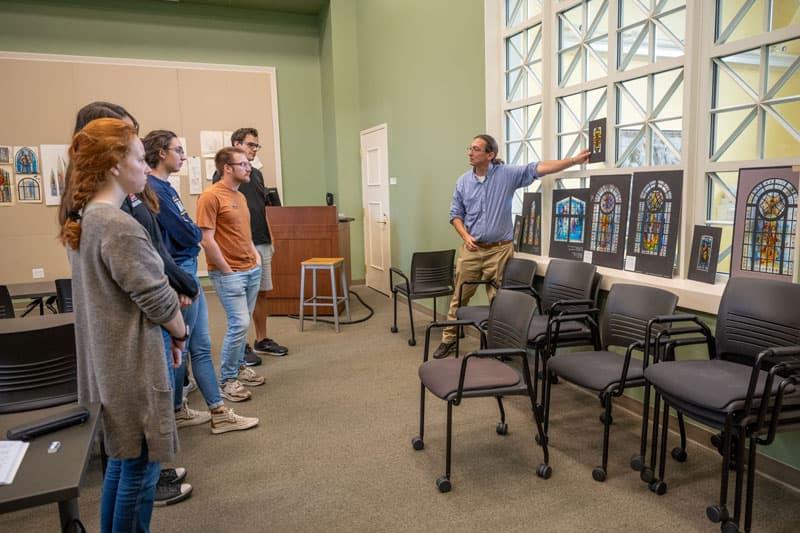
哈特利不仅将草稿视为艺术作品, but as an invaluable teaching tool illustrating the painstaking hours invested in designing a window. In all, 他带回了200多张图纸和全尺寸的模型, as well as two sample windows Lawrence created for the National Cathedral.
Painting with Light began with Hartley presenting part of that collection, and explaining each step in the process of creating a stained-glass window. 在最初的草图之后, the artist creates a detailed drawing showing how the design will be separated into individual panes and selecting colors for each piece. The next step is to create a “luminaire”—a mock-up of the window painted onto clear vellum and framed 这样光线就能穿透它. 艺术家然后创建一个全尺寸的窗口模板, 每个单独的部分都有标签. And, finally, 像国家大教堂这样的项目, he or she will also create sample window panels that are shipped to the site to be viewed in that light at different times of day.
Hartley estimates that an artist can work on a major project for three to five years before the windows are completed and installed.

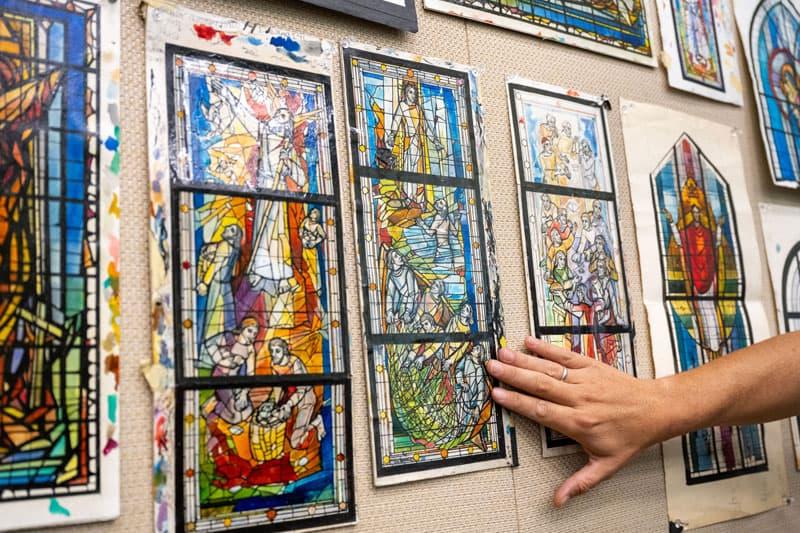
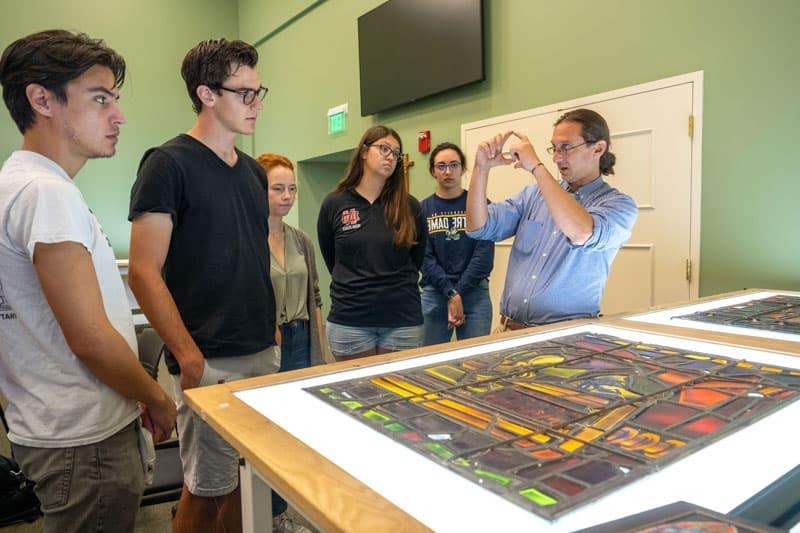
克里斯蒂娜Sieben, a fifth-year architecture student with a concentration in historic preservation, 说这门课让她对彩色玻璃有了新的认识.
“Just to be able to dive deep into one particular element of architecture and its history has been really amazing,”她说。. “我一直在想, oh, 彩色玻璃很美, 但还有很多我不知道我错过了的东西. 我从来没有想过它是如何组合在一起的, 不同方法的优缺点, 也不知道它是如何失败或被修复的. 这让我对它有了更深的理解.
“Having this understanding will help me design around it and better communicate with and advocate for the companies who do this work. It will help me as I design to really just see the bigger picture of everything I work on.”
St. 阿达伯特天主教堂
One of the most meaningful aspects of the class for fifth-year architecture student Nathan Walz was the students’ work with St. 阿达伯特天主教堂. 成立于1910年, the parish has been a cornerstone of South Bend’s westside neighborhood—first for a primarily Polish immigrant community and now serving a predominantly Latino population.
教会, 哪一个是在1926年完成的, welcomes more than 900 parishioners for Masses in English and Spanish each weekend. However, 这座建筑需要一个新的屋顶和大规模的翻新, 去年秋天, 教区获得了250美元的奖励,000 matching grant from the National Fund for Sacred Places to begin repairs.
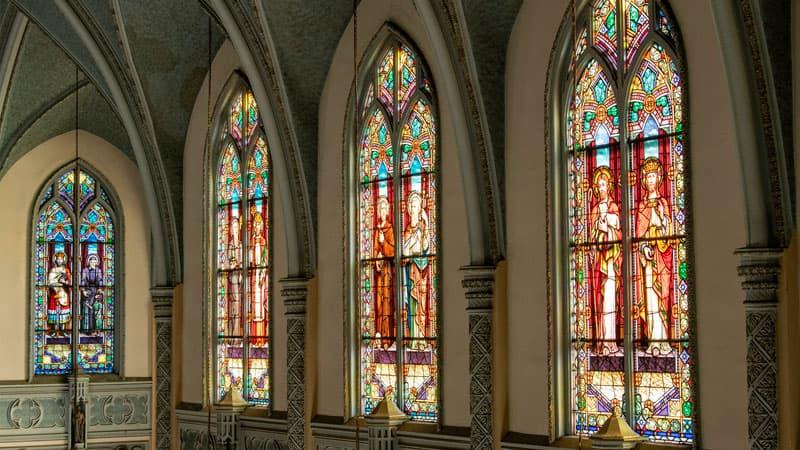
能够为圣. 对华尔兹来说,阿德伯特的改造尤其令人满意, who has a concentration in historic preservation and hopes to focus on ecclesiastical architecture in his career.
“There’s an enormous amount of hours that go into various student projects, 很多这样的项目从未离开过大楼,他说. “So, it was really special to be able to create an end product that will actually contribute to this restoration.
“公共领域的建筑,比如教堂, 库, museums, 音乐厅——创造一种社区和文化认同感. It’s crucial to invest in these resources that are accessible to everyone.”
教堂也可以成为移民社区的到达点. 沃尔兹继续说,阿达贝更是如此.
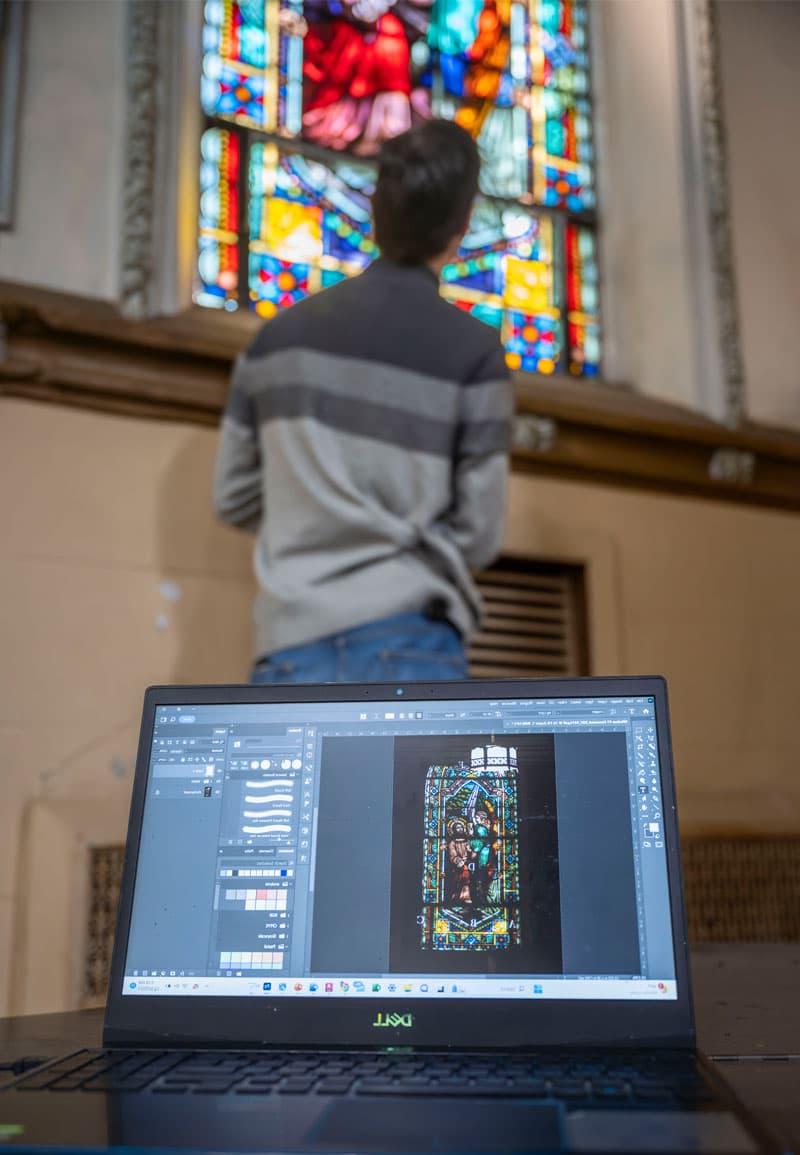
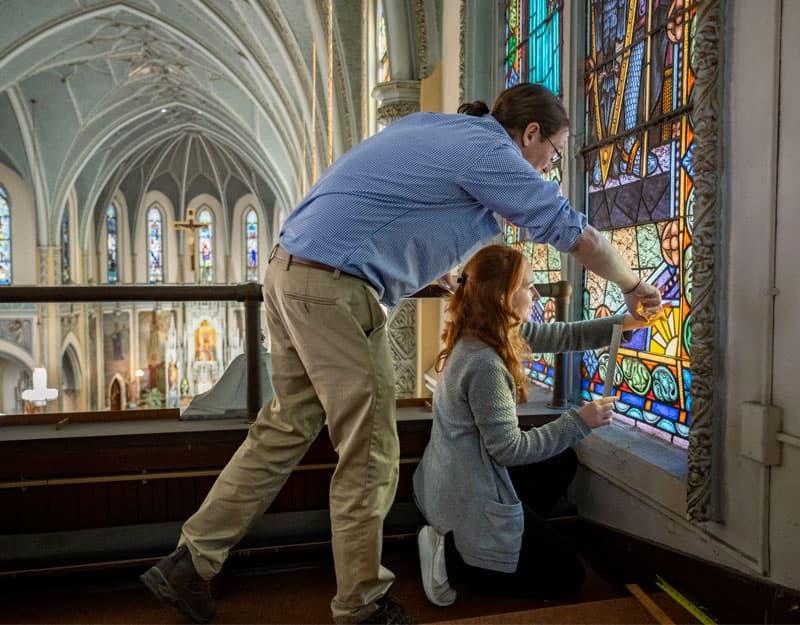
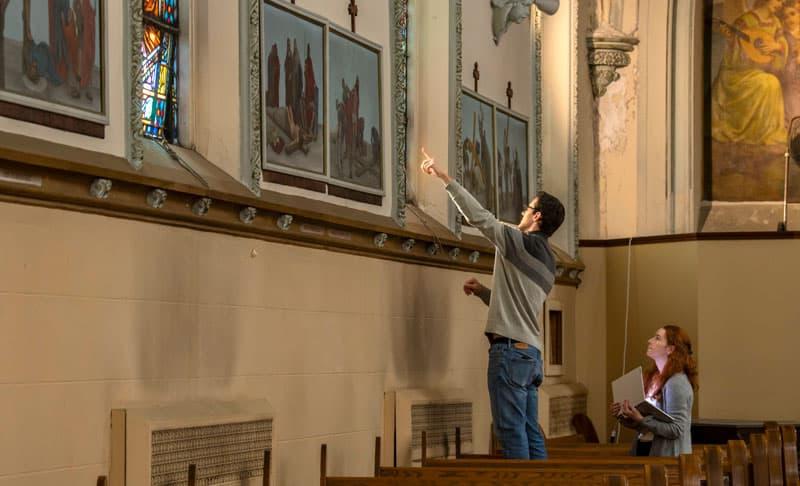
“当一个移民人口来到美国.S. and establishes themselves, a church building says, ‘We’re putting down roots. 我们会留下来,’”沃尔兹说. “It was an important historical moment first for the Polish immigrants who founded St. Adalbert’s and then for the Hispanic community who adopted it and made it their own. And if you lose that marker, then a large part of that identity is lost as well.”
这个班实地考察了圣. Adalbert to photograph and document the condition of each window and then spent weeks creating a detailed report of their status and the recommended repairs for the church. Hartley hopes it will be the beginning of a longer-term partnership with the parish.
“Part of our Catholic mission is to serve the community and those in need, and St. Adalbert’s needs our help so that they can continue to serve others,他说. “Whenever we can use our instruction to engage with our community—and allow our students to learn to communicate with clients and address real-world issues at the same time—I think that’s a success.”
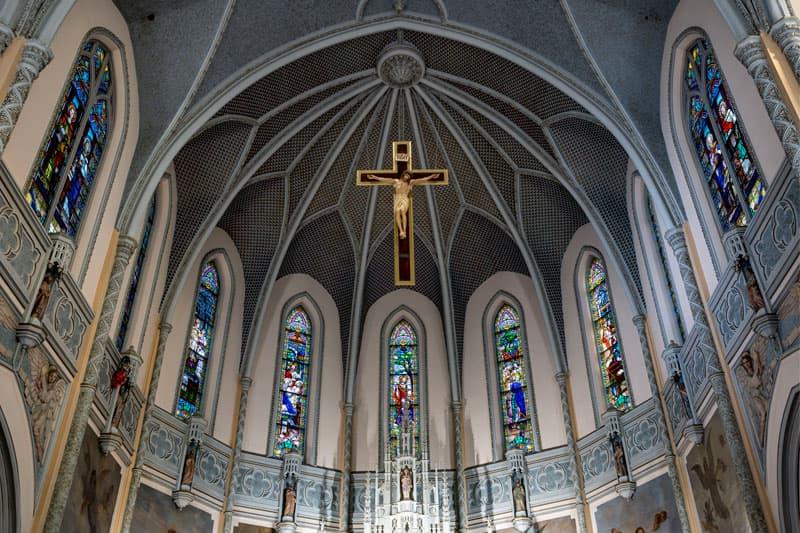
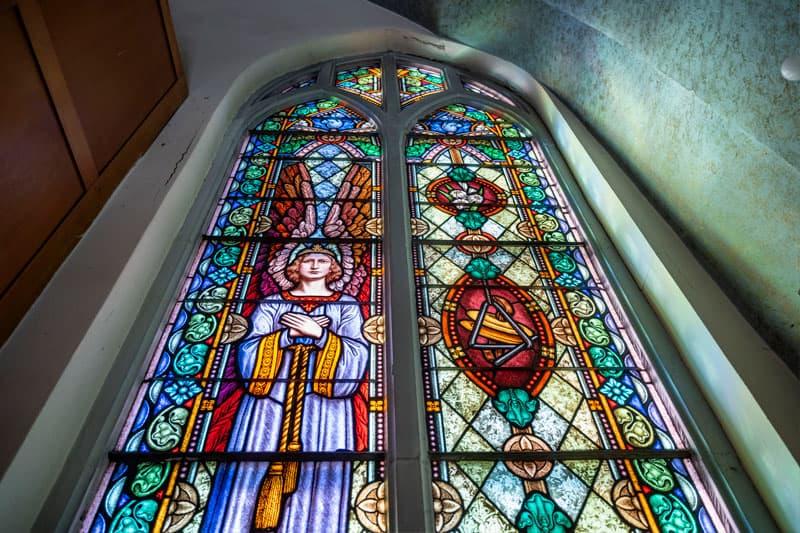
最后的项目
整个学期, Hartley allowed the students to try out various stained-glass-making skills, from cutting glass to 混合和涂漆 to a repair technique called “chemical edge bonding.”
Working in the historic preservation workshop in Walsh Family Hall and donning safety glasses to cut their own lines in sheets of glass brought everything they learned in the classroom to life, Walz说.
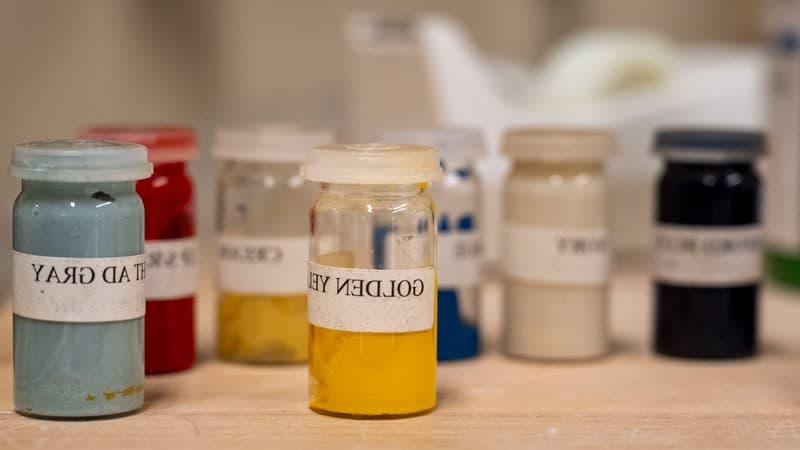
“我认为在像这样的体验式课程中, 你能更好地在事物之间建立联系,华尔兹说. “I came to 电竞赌博平台’s architecture program because I was interested in buildings and how they’re put together. And the hands-on experiences we’ve had—whether that’s working with wood and stone in a historic preservation class, 参观罗马的古建筑, or experimenting with stained glass here—have really enhanced our learning.”
The students also worked individually and in small groups throughout the course to design their own stained-glass windows. 尽管他们无法从他们的设计中创造出永久的窗户, 他们创造并展示了灯具作为他们的最终项目.
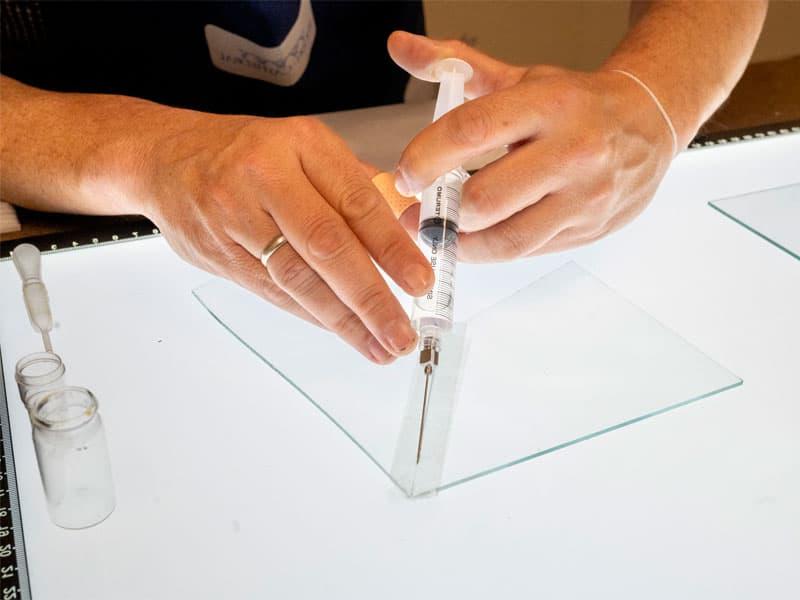


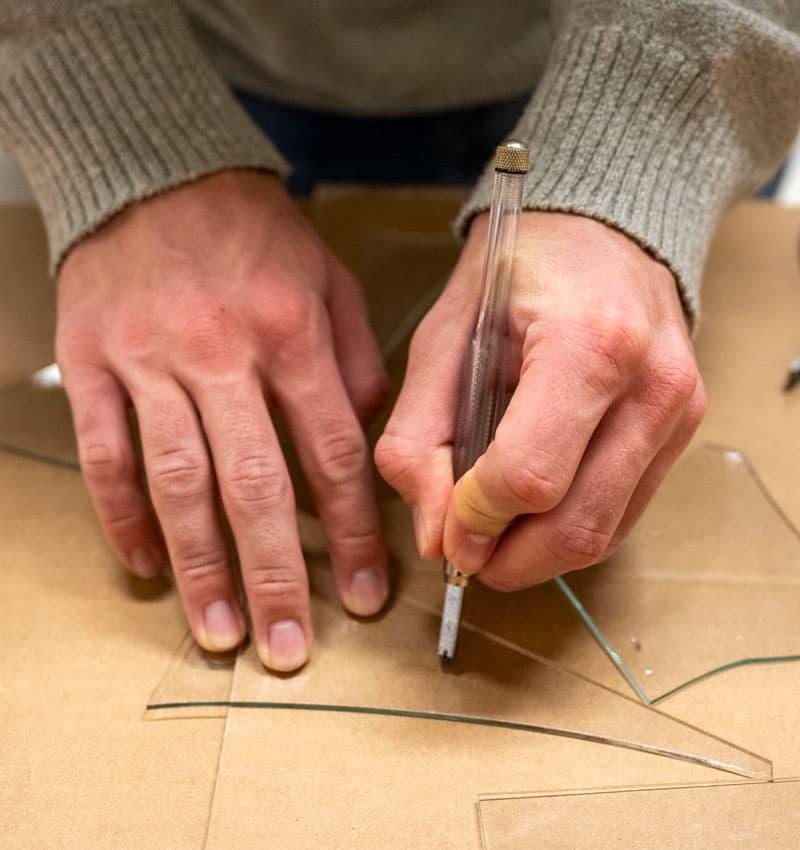
Sieben, Walz, and senior Gabriel Goertz worked together on their final project: a three-panel luminaire depicting the evolution from the natural world to the built environment through architecture. 对于Goertz, 化学专业大四, the class challenged him to think in a different way and explore an interest completely outside his discipline.
“I feel like sometimes students don’t take the time to explore their interests because they’re so career-focused. 但是为什么不充分利用你的本科教育呢?他说. “在电竞赌博平台有很多独特的体验. 我们不仅仅是一所商学院或STEM学校, 我发现了很多在其他地方找不到的机会.”
Hartley plans to continue offering the class in the future and hopes to share it with more students from other disciplines—including those studying art, theology, 还有中世纪研究——以及建筑.
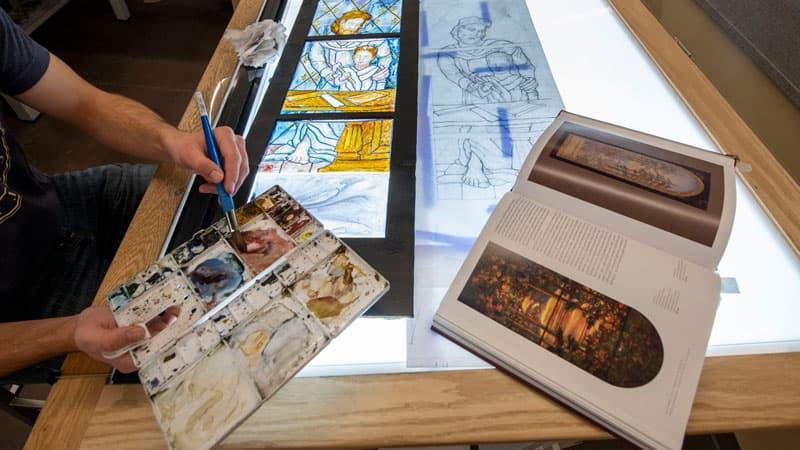
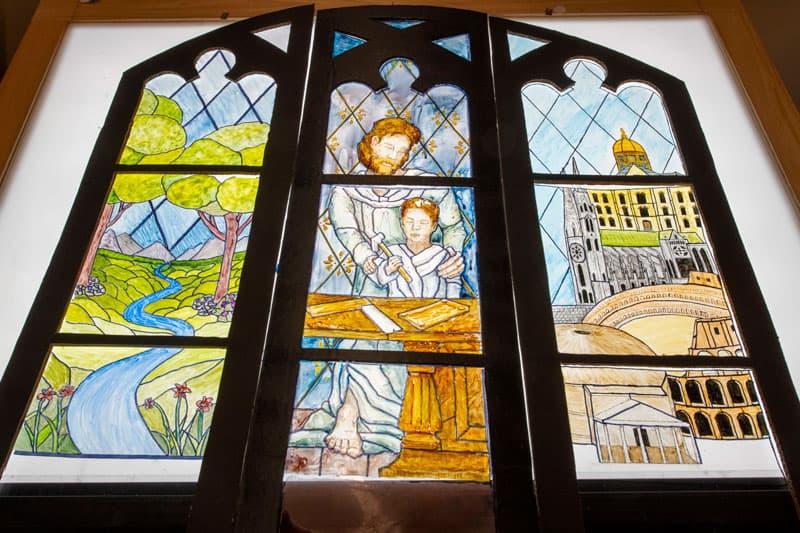
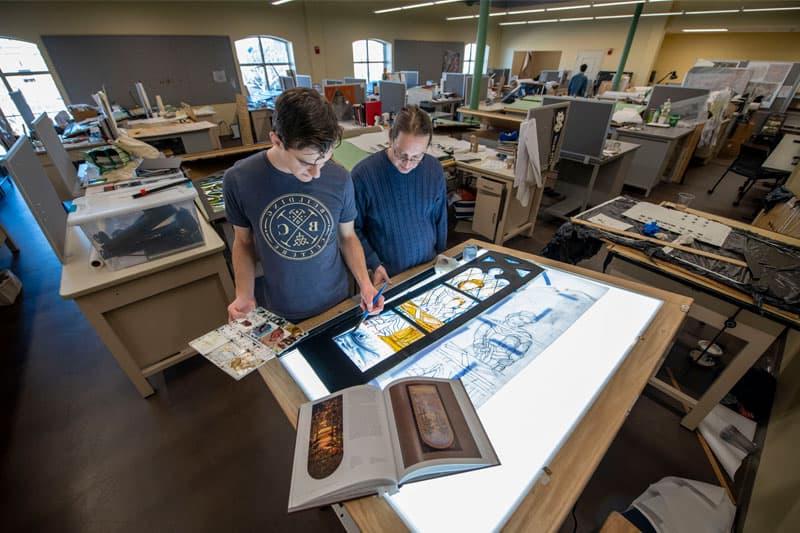
While the art form has evolved in many ways since its beginnings in the Middle Ages, 彩色玻璃作为一种媒介有一种独特的力量,能引起敬畏和惊奇, he said.
“It all started with the windows being created in the cathedrals of the Middle Ages as a kind of ‘poor man’s Bible’ for those attending Mass,哈特利说. “I can’t imagine how powerful it would have been for people in that time to step inside and see those huge expanses of stained glass, 用他们从未见过的生动的光线讲述故事.
“Today, stained glass still has the ability to inspire us—and to serve as a tangible expression of a spiritual connection.”
